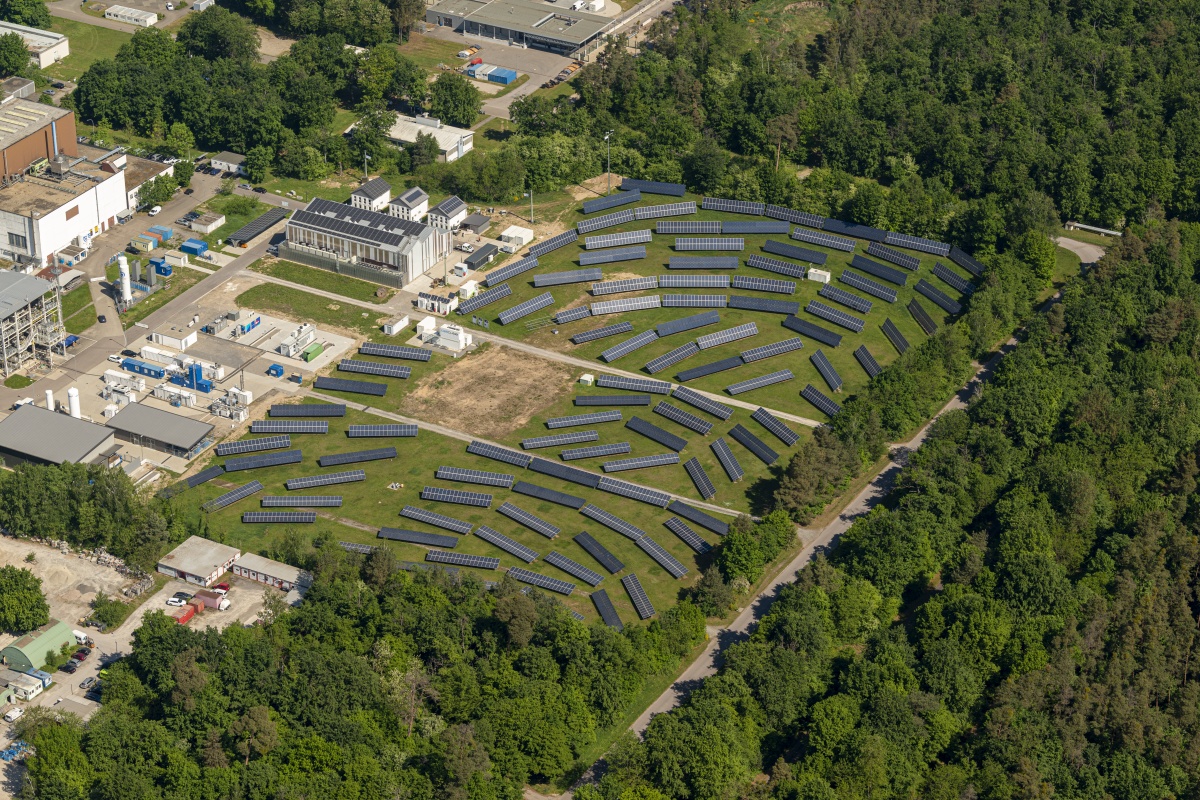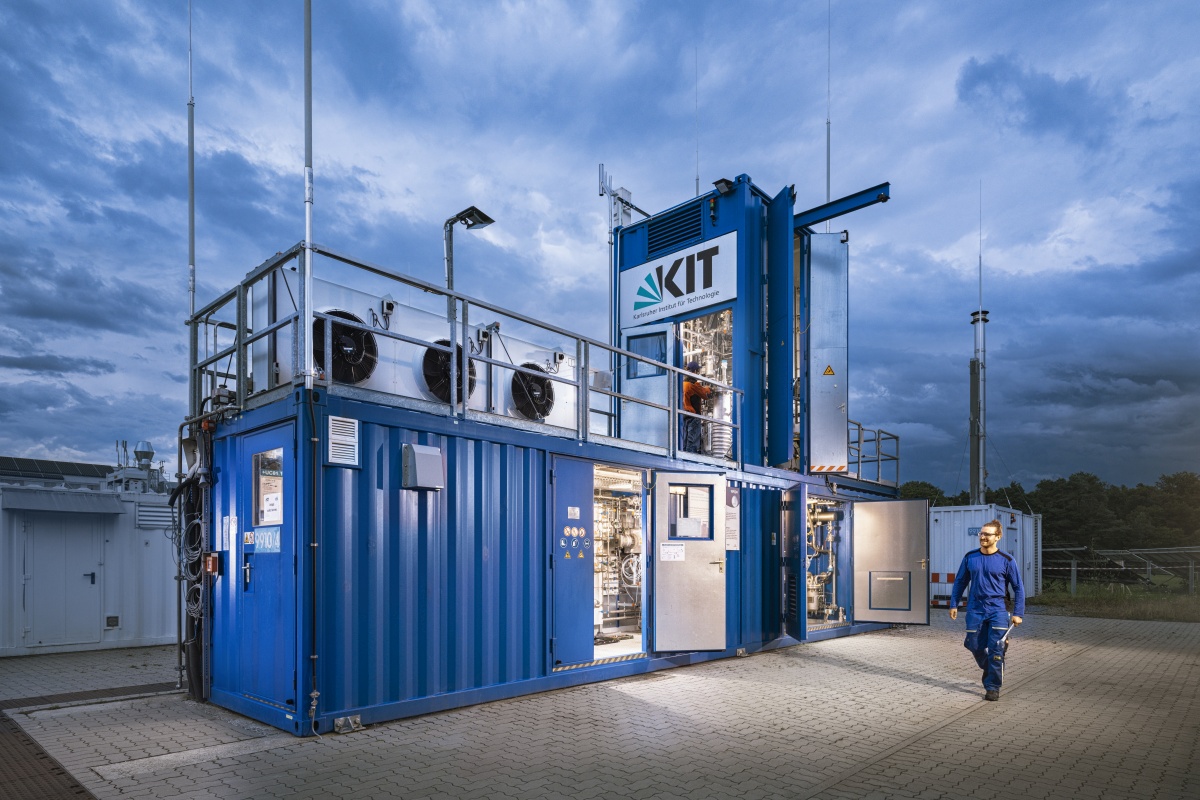Energy Transition: The Long Road to Energy Security
Researchers at Karlsruhe Institute of Technology (KIT) Are Working on Concepts for a Stable, Economic, and Climate-friendly Energy Supply in Germany
In a crisis-stricken world, the connection between energy and security policy is coming to the fore. Renewable energies promise greater independence from resource-rich countries and are key to mastering the energy transition and thus to achieving the climate targets enshrined in law: Reducing CO2 emissions and achieving greenhouse gas neutrality by 2045.
Where does Germany stand when it comes to restructuring its energy systems? Researchers at KIT are investigating the technological as well as the economic and social aspects of energy transformation. “A large proportion of the energy consumed in Germany still comes from fossil sources,” says Professor Roland Dittmeyer, Head of KIT`s Institute for Micro Process Engineering (IMVT). His research focuses on so-called Power-to-X technologies: Processes for converting electricity, for example from wind power or photovoltaics, into other energy sources such as synthetic fuels, gases, and chemical raw materials.
“When we are talking about energy security, we do not refer to electricity alone. The electricity sector currently only covers around 20 percent of our final energy consumption. The remaining 80 percent are predominantly material energy carriers such as mineral oil products, natural gas, biomass and coal, as well as some district heating. There is still a lot of work ahead of us.”

The 2024/3 issue of the research magazine lookKIT is dedicated to the theme of the Science Year 2024.
To the Magazine“Apparently, the economic benefits were valued higher than the security of supply.”
Energy Supply Dependent on Imports
Wolf Fichtner, Professor for Energy Economics at KIT`s Institute for Industrial Production (IIP), explains that despite an increase in renewable energies making Germany less dependent, imports from other countries would still be necessary. “In 2023, for the first time in many years, we imported more electricity than we exported. This could also be the case in the coming years, with electricity being imported from other European countries. For economic reasons alone, we will also import some hydrogen and hydrogen derivatives. Germany alone will not provide the amount of energy we need within national borders,” says Fichtner.
For Fichtner, a geopolitically secure energy supply does not mean complete independence. He considers it more important to diversify the sources of supply, i.e. to have a broader base in order to avoid making the same mistakes as in the past. “We relied heavily on Russian pipeline gas because the economic benefits were apparently valued higher than the security of supply.” He believes it is now important to focus on several suppliers and regions.
Fichtner advises better balancing the different factors that play a role in shaping future energy supply. “In energy economics, we speak of the energy industry quadrangle with the corners of economy, ecology, security of supply, and social acceptance. We have to take these dimensions into account when making decisions and deal with the conflicting goals that arise.”
Power-to-X for Energy Storage and Imports
From a technological perspective, large Power-to-X plants in other countries for the production of energy sources such as methanol, ammonia, and hydrogen could play an important role for Germany in the future. For example, in regions where electricity from wind energy is particularly cheap, such as Patagonia in Chile. From there, the energy sources could also be transported to us, Dittmeyer explains. He also coordinates research at KIT’s PtX Lab, which is part of the Energy Lab, Europe's largest research infrastructure for renewable energy generation and storage methods.
In Germany, in addition to grid expansion, the storage of electricity is a crucial point for the nationwide availability of renewable energies. “In order to further increase the proportion of electricity from renewable sources from the current average of around 50 percent, we need practical solutions to compensate for fluctuations in wind and solar energy,” says Dittmeyer. High-performance battery and Power-to-X technologies are in demand. The latter can store renewable energy over longer periods of time, even during seasons. “However, this requires flexible power plants that can convert these stored energy sources back into electricity when needed.”
Gas-fired Power Plants As Back-up
Fichtner believes that additional back-up facilities, in the short term probably in the form of gas-fired power plants, are indispensable due to the planned phase-out of coal. “Our analyses show that it is necessary to establish corresponding capacities by 2030 to ensure a stable and secure supply.” In his opinion, the problem is refinancing the plants, as they may only be in operation for a few hours. One possible solution: A so-called capacity market, which would provide operators with income not only for the amount of electricity fed into the grid, but also for the capacity they keep available. The Federal Ministry for Economic Affairs and Climate Action is currently working on corresponding concepts.
Other important pillars of a stable and more sustainable energy system, according to Fichtner, are significantly higher energy efficiency and energy savings in all sectors: “Energy that we do not consume does not have to be produced or imported and does not cause emissions. This is often somewhat neglected in the discussion.”
The Energy Transition Only Works in a Cooperative Way
The energy economics expert considers it the duty of politicians to create reliable framework conditions, such as effective emissions trading. “This transformation can only succeed with international cooperation. We cannot achieve it on our own at a national level. And we need to involve society as a whole, be open to technology, and diversify the way we procure and supply energy.”
“This issue concerns us all,” says Dittmeyer. “We have to acknowledge that climate change is a fact and that it is much cheaper in the medium and long term to restructure the energy system now because of the consequential costs to be feared - even if the costs will be higher than in the past.”
Christoph Karcher, November 8, 2024
Translated by: Dipl.-Übers. Veronika Zsófia Lázár



